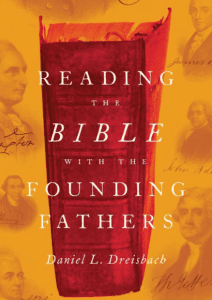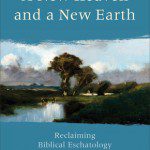When I get a new translation, I read three passages slowly and carefully, with a Greek [Green] NT near at hand, to give me a feel for the translation and the translation theory: I read the Sermon on the Mount, I read Romans 3, and then I read James. Usually I can get a good solid feel for the translation from these three passages.
 I did this recently with The Common English Bible (New Testament)
I did this recently with The Common English Bible (New Testament). I like what I see here and I’ll keep this translation near me on my desk.
What do you think of modern translations? What is best for public reading?
What do you do? How do you assess a new translation? Do you want something that sounds familiar or something that startles you by change and makes you to think anew about the text? Which translations do you find most useful today?
115 leading Bible scholars participated; ecumenical and mainline; field tested by 77 reading specialists in 13 denominations. It comes out completely in 2011, four hundred years after the KJB. The CEB will be useful and good for personal reading, public reading, and for classroom study. It will have the Apocrypha when completed.
Here are a few big summary thoughts, and I’ve only dabbled in other passages:
First, it sides in general with an NIV or TNIV approach: it aims at accessibility, clarity and avoidance of unnecessary misunderstandings. Thus, it has “brothers and sisters” instead of “brothers” throughout. While some call this “inclusive” there is a solid fact suggesting this isn’t “inclusive” so much as “accurate.” Very often a “brothers” means “everyone” and not just “male Christians.” So that it is not an inclusive view so much as an accurate translation.
It has “human being” and “the Human One” instead of “Son of man,” and whether you like the former or not, the latter is often misunderstood. So, this rendering will push the reader to read more closely.
Second, this translation sometimes adds expressions to make the Bible clear where a more literal translation will prompt some to misunderstand. Some of these clarifications will be disputed, but I’d rather have an attempted clarification followed by discussion than as assumption that we are right when we are dead wrong. Thus, Matthew 5:44 has “those who harass you because of your faith” instead of the Greek’s ending with “harass you.” The “because of your faith” is added in order to clarify that the harassment was generated by faith and following Jesus.
At the end of the same paragraph we have “your heavenly Father is complete in showing love to everyone” instead of just “complete” or, as in most translations, “perfect.” (Be perfect as your Father is perfect.) Here the perfection/completeness is seen, on the basis of solid contextual information, in the Father’s love for all.
Third, there’s a little New Perspective flash at times when it cames to translating “faith of Christ” (often translated “faith in Christ”) and the CEB has “faithfulness of Christ.” Thus, Romans 3:22 has “God’s righteousness comes through the faithfulness of Jesus Christ” and here we see a clear emphasis on the obedience of Christ. In 3:25 we have “a ransom that was paid” for the typical “redemption.” And then we have “the place of sacrifice where mercy is found” and this has been often understood more in terms of propitiation.
James 2:1 has the “faithfulness of our Lord Jesus Christ” — and there again we have a “faith of Christ” taken to refer to Christ’s faithfulness and not our faith in Christ. But in the famous justification passage of James 2:14-26 they translated “showed to be righteous” instead of “justified.” Not all agree, but having a translation like this will yield to fruitful study and inquiry.
Fourth, there is variety: I’m happy to say the translators didn’t get too wooden. Sometimes the word is “righteousness” and other times it is “justice” and I’m not sure the rationale for each, but there’s two sides to the Hebrew term and therefore also to the background for the NT terms and I like this ambivalence and variety.
Fifth, everywhere the sentence structure is clean and clear; they’re doing their dead-level best to translate so that the Bible makes sense. I’m not sure I like “Happy” in the beatitudes, but I think as many will be helped by “Happy” as are led into confusion by “Blessed.”











